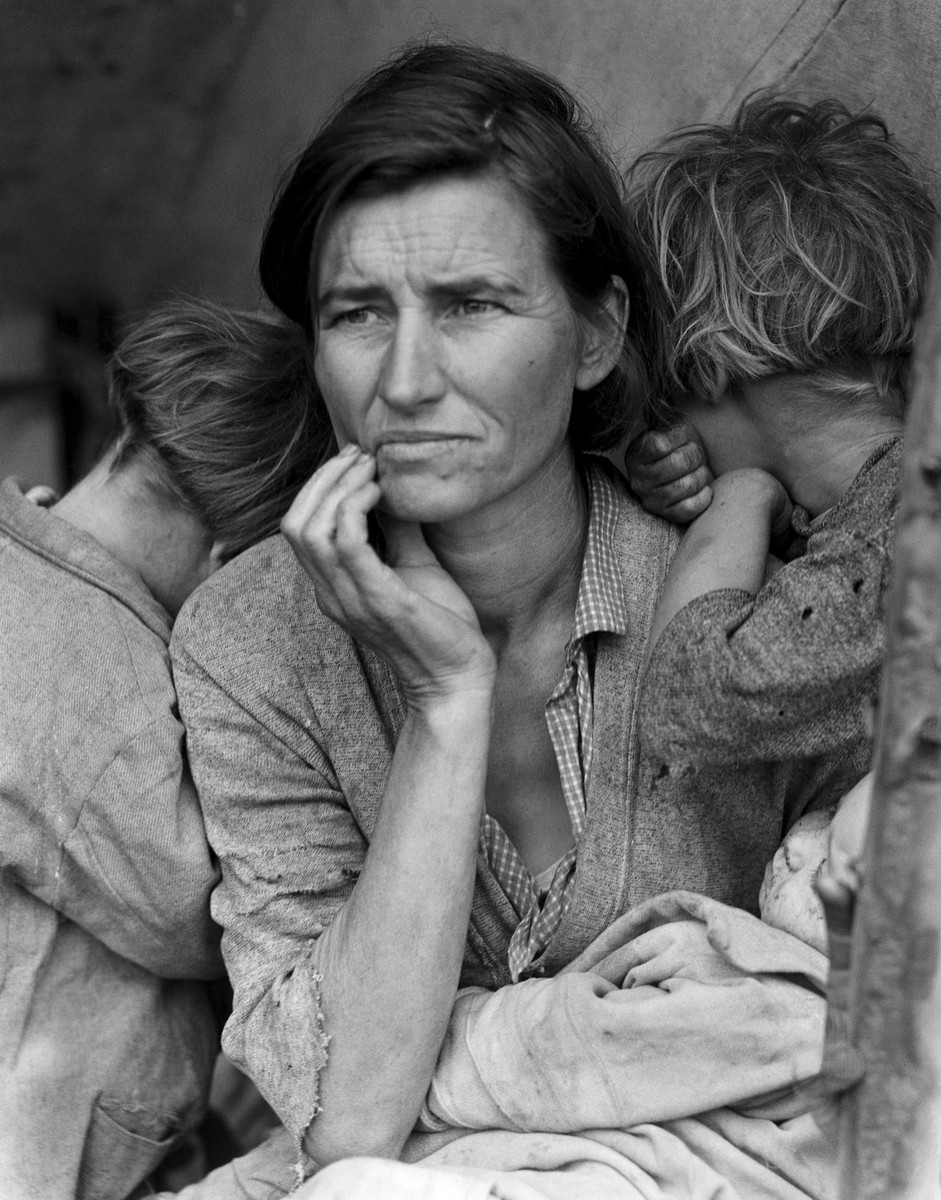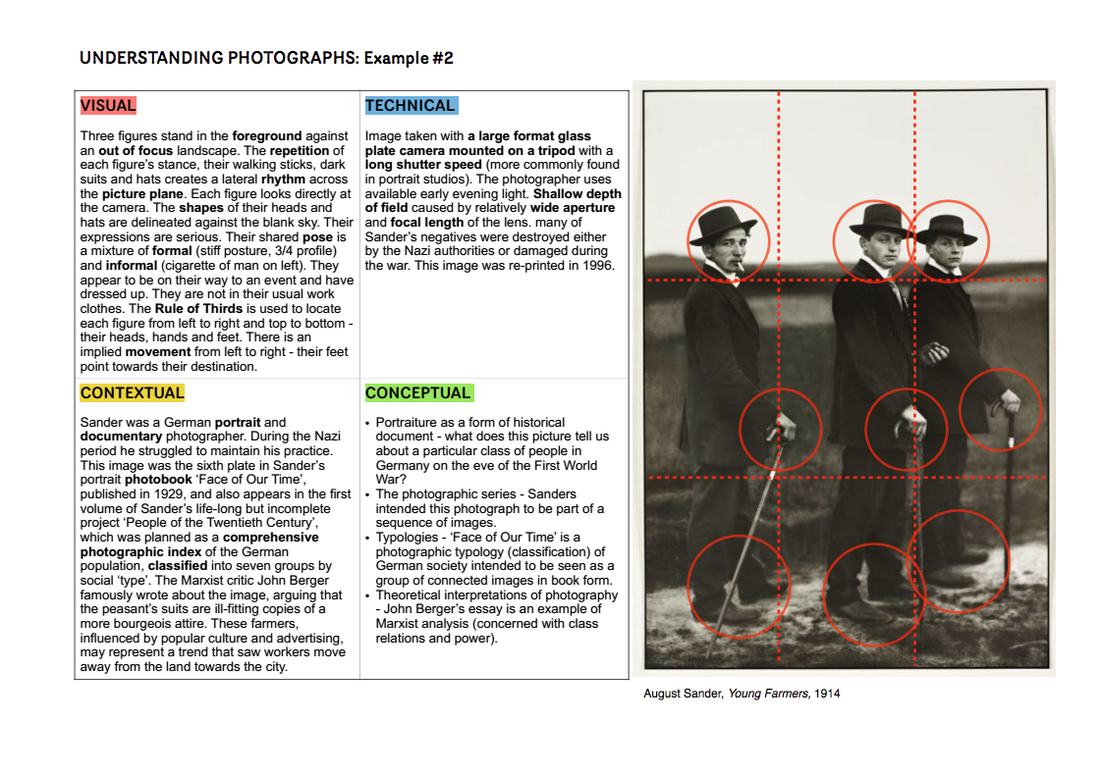“criticism is informed discourse about art to increase understanding and appreciation of art”
(Source: Criticizing Photographs: An Introduction to Understanding Images, by Terry Barrett, 1990, pg:3)
At AS we taught you how to analyse and write about photographs using specific terminology such as: Formal Elements – lines, tone, texture, shapes, colour, space etc. Composition – layout, rule of thirds, depth of field, cropping/framing, foreground/mid-ground/ back ground, viewpoints, balance. Technical – use of lighting, camera-skills, aperture, shutter-speed, iso, white balance etc.
In your essay you have to write about your chosen artists/photographers. Often you would chose a specific image or body of work or a photobook and use as an exemple and analyse in depth in relation to your essay question and investigation.
To develop your analytical skills you need to understand different ways or methods of analysis.
Firstly, here is a model of a 4 step process
METHODOLOGY OF ANALYSIS
Describing ~ FORM ~ What is here? What am I looking at?
Interpreting ~ MEANING ~ What is it about?
Evaluating ~ JUDGEMENT ~ How good is it?
Theorizing ~ CONTEXT ~ Is it art? How does it relate to the history and theory of photography, art and culture?
Read through this Powerpoint how to analyse a photograph + photographic theory for more help and guidance
TASK 1: Choose one key image from your first artists/photographer that you are studying in your Personal Study and write a detailed critical analysis following the above methodology.
You must use subheadings in your analysis as above i.e. FORM, MEANING, JUDGEMENT, CONTEXT.
Now lets look at a Case Study:

When analysing a photograph you may want to operate in an interdisciplinary manner using a variety of different analytical methods and approaches:
- Assessed through reference to form, process and technique
- Investigate the intentions of the photographer and the context of its making
- Viewed as a social or historical document
- Related to politics and ideology
- Discussed in relation to class, race and gender
- Considered in terms of aesthetics and traditions of representation of art
- Analysed through reference to psychoanalysis
- Decoded as a semiotic text
Read through Powerpoint case study Dorothea Lange for more help and guidance
TASK 2: Choose one key image from your second artists/photographer that you are studying in your Personal Study and write a detailed critical analysis using one or two of the above analytical approaches.
Upload image analysis as a blog post by Fri 19 Jan.
For more help and guidance on image analysis visit this website: Photopedagogy


